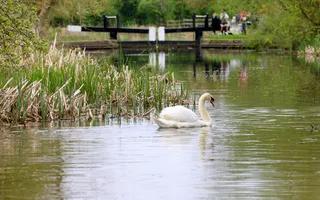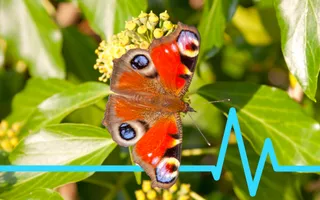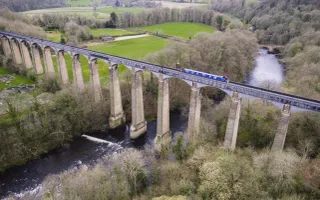We need to raise more money to protect and preserve our waterways for the species that depend on them, before it's too late.

Nature is in crisis. Will you help us protect it?
Canals have become a lifeline for nature. Without constant care, these vital habitats would be lost.
Climate change, invasive species and habitat loss are putting devastating pressure on the wildlife we all love.
One in six native species are now endangered, and with 90% of wetlands already lost, our waterways offer a unique blend of land and water habitats to help nature recover and thrive.
But these precious ecosystems need care all year round. Our expert teams are tirelessly planting reedbeds to shelter fish, restoring hedgerows for pollinators, and clearing invasive plants choking the waterways.
Please donate today to help protect canal habitats so they remain a lifeline for nature.

Protect nature's refuge
If we lose our canals, we lose more than a peaceful place to walk or watch boats drift by. We lose one of nature’s last refuges.
Canals provide a thread of wildness that weaves through our towns and cities, and connect an increasingly fragmented landscape. From butterflies and bees to kingfishers and water voles, there's an abundance of wildlife that calls them home.
We're giving it all we've got, but we can't do it without your help. Your gift today could help protect the nature you love, and the canals that make it possible.

What does Canal & River Trust do to protect nature?
Create safe havens
Many species rely on waterway banks for food and shelter. Across our network, we're installing thousands of square metres of floating reedbeds. These ecosystems will provide havens for fish, insects and mammals, and act as safe spaces for nesting birds to care for their chicks.
Fights back against invasive species
Floating pennywort is a fast-growing weed that blocks light, drains oxygen, and smothers native plants, insects and fish.
It's high priority to eradicate this and other invasive plants from our canals - but the battle is relentless. Pennywort can regrow from pieces smaller than a 10p coin, and our teams spend thousands of hours clearing every tiny fragment from the water by hand.
Plants hedgerows and orchards
Hedgerows and orchards act as nature's super-highway by helping animals travel safely from place to place. We're restoring ancient hedgerow habitats and planting thousands of trees, so wildlife can travel freely and pollinators can keep our canals buzzing.
Last Edited: 16 July 2025


Stay connected
Sign up to our newsletter and discover how we protect canals and help nature thrive

